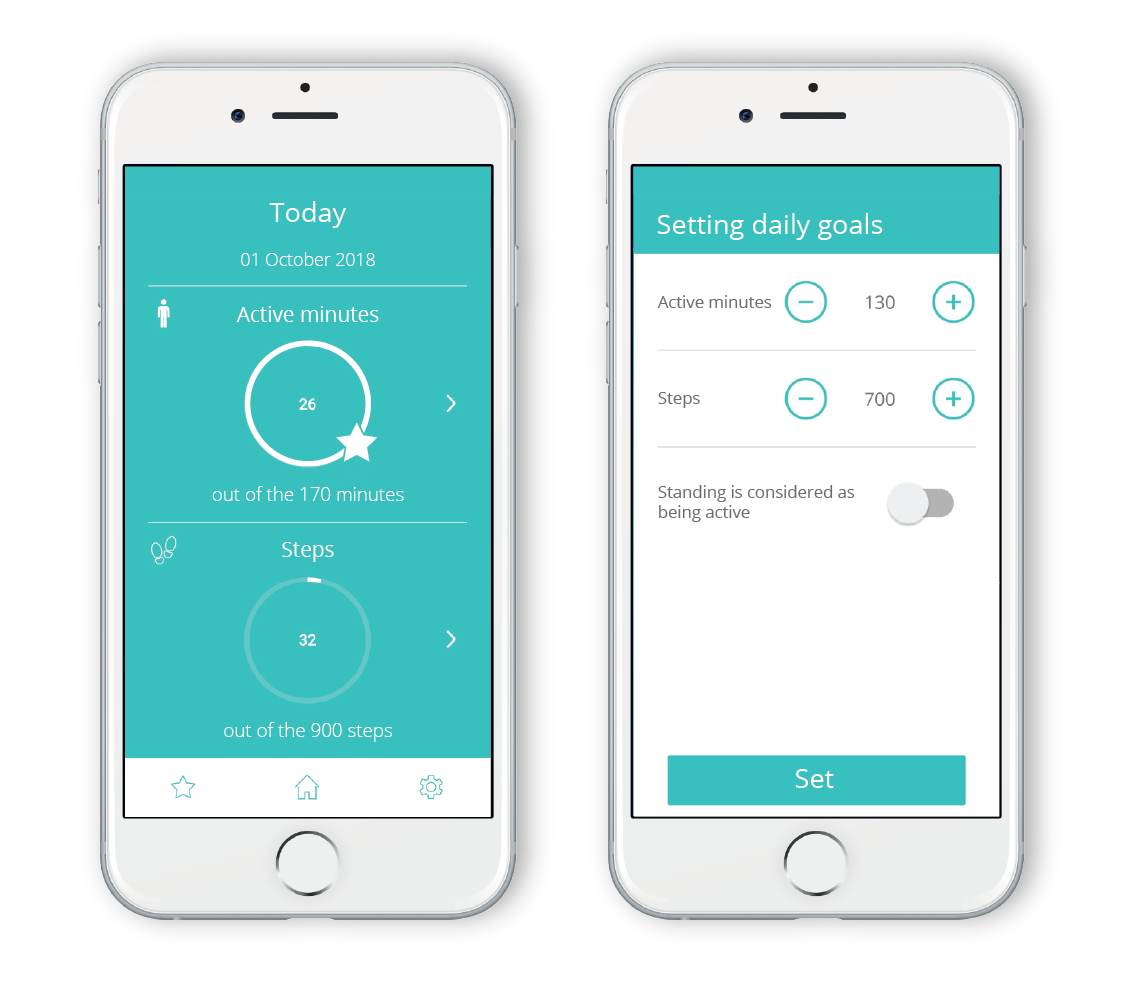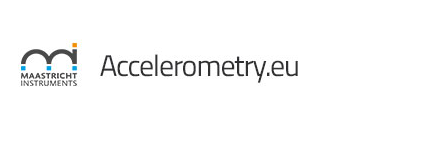 Introduction
Introduction
Many portable meters or wearables have been developed in recent years that can help people improve their health and vitality. In practice, however, it is not self-evident that such a tracker’s measurements can be used for people with (chronic) illnesses, elders, or healthcare professionals. Darcy Ummels, who received his doctorate from Maastricht University on October 1st, came to this conclusion. For COPD patients, for example, an activity meter that does not record movement effectively can be demotivating.
Dr. Darcy Ummels is a lecturer and researcher at Zuyd University of Applied Sciences, the Lectorate for Chronically Ill Autonomy and Participation, and the Academy of Physiotherapy. In recent years, she has focused on themes such as activity meters/trackers and whether the results and data generated by this technology can be used by customers, citizens, and healthcare professionals.
How might activity trackers be useful in the healthcare field?
In 2018, one of the PhD student’s first investigations revealed that commercially available activity trackers incorrectly measure in persons with chronic diseases like osteoarthritis, COPD, or diabetes during regular activities like shopping, vacuuming, or short distance walking.
Ummels states that fitness trackers are designed for active persons who walk and exercise over larger distances on a regular basis. Those trackers can measure that properly, and they’re getting better. However, fitness trackers struggle with slow motions, such as taking a few steps at a time in and around the house. This type of exercise is especially beneficial for persons with chronic illnesses or the elderly who find it difficult to exercise.
The elderly may find fitness trackers and applications difficult to use. It is difficult for a non-digital user to operate an activity meter or smartwatch because of features such as payment, GPS, music playing, and the numerous functions of the associated apps.
Enhancing activity trackers
Following the discovery that many commercially available activity trackers were unsuitable for physiotherapy, occupational therapy, or rehabilitation programs, the question arose as to which activity trackers were suitable. Ummels’ PhD research also included the enhancement of an existing activity tracker.
Ummels and colleagues established the Limburg Meet (LIME) initiative to further enhance an existing activity meter, the MOX, to meet the needs and wishes of the elderly (65+). The algorithm was tweaked so that the tracker accurately detects the number of steps and active minutes taken during everyday tasks like getting out of bed, vacuuming, and going shopping. In addition to the activity meter, an app was created to meet the technical skills and requirements of persons over 65 and to provide insight into the wearer’s own exercise behavior and feedback. The newly created activity meter was then put to the test by 28 senior citizens. They rate the MISS Activity meter on its manageability and application in daily life, among other factors. MISS Activity stands for Measure It Super Simple Activity.
The entire design of the activity tracker was coordinated with the users, including the appearance, the lights on the meter, the instructions, and the clip with which it is attached to the pocket.
The goal is to make the activity tracker accessible to the elderly, chronically ill people, researchers, and healthcare providers. Healthcare organizations can contact Maastricht Instruments to inquire about using the tracker at their facility. It’s crucial to have a tracker for this target group because typical activity trackers struggle with a small number of passes at a time, in and around the house. The scientifically proven meter also benefits researchers and paramedics, such as physiotherapists.
How do you use activity trackers as a therapist?
It’s critical that you don’t just measure for the sake of measuring, but rather use an activity tracker to bring value to your treatment. MISS Activity, for example, was tested at the Rughuis Parkstad, a mental health facility for people with severe somatic symptom condition (spinal column-oriented). Practitioners now have a quantitative means to track how much activity someone has had and how that movement is spread throughout the day and week, which is a useful supplement to treatment.
For physiotherapy, activity trackers are a gift. People frequently do not log their daily activity correctly. Chronic patients, for example, can use an activity tracker to better disperse their movement and energy throughout the day. MISS Activity is accessible through Maastricht Instruments.
With all the latest Fitbit, Garmin, Huawei, and Apple models and services, it’s impossible to keep up. It’s critical that applied research focuses on assisting healthcare providers and patients in effectively integrating activity monitors into their daily routines. At Zuyd University of Applied Sciences and LIME, they aspire to do exactly that.
Related products:
MISS Activity
The MISS Activity is a development of the existing MOX Activity Monitor from Maastricht Instruments. It is an easy-to-use activity monitor for the elderly. Click here for more information.
MOX1 Activity logger for physical activity assessment.
The MOX1 is a validated accelerometer-based activity logger that seamlessly measures and records high resolution raw acceleration data up to 7 days. By using the IDEEQ software featuring our proprietary algorithms, objective measurements of human physical activity can be classified and quantified. The waterproof system design and biocompatible adhesive ensures easy application and comfortable wear by the subject.
How can we help you with your research?
Maastricht Instruments creates equipment in the field for accelerometry. We provide support for Clinical research, E-health applications, accelerometry algorithms and data processing and analyses. Consult us about our accelerometry products, MOX1, MOX2, MOX3, MOX5 and BACE. or eHealth applications: Hospital Fit and Miss Activity
